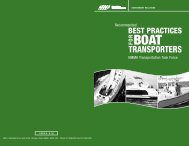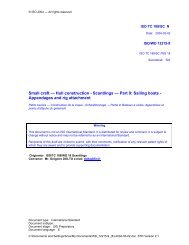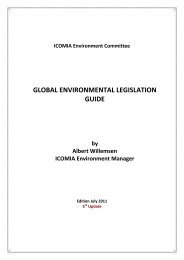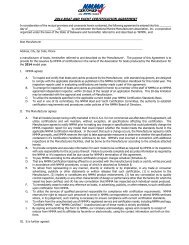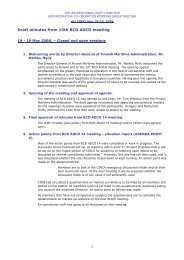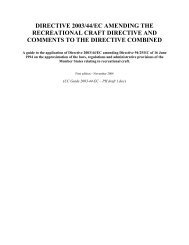Intellectual Property Protection and Enforcement Manual - Ipr-policy.eu
Intellectual Property Protection and Enforcement Manual - Ipr-policy.eu
Intellectual Property Protection and Enforcement Manual - Ipr-policy.eu
You also want an ePaper? Increase the reach of your titles
YUMPU automatically turns print PDFs into web optimized ePapers that Google loves.
Br<strong>and</strong> <strong>Protection</strong> <strong>Manual</strong><br />
Unilever<br />
As one of the world’s largest consumer goods companies, Unilever strives to meet the<br />
everyday needs of people through its food, home, <strong>and</strong> personal care product lines.<br />
With around $50 billion in annual revenue <strong>and</strong> 170,000 employees, Unilever’s br<strong>and</strong><br />
protection efforts require a global perspective that accounts for the numerous markets in which<br />
it operates. The company has gone to great lengths to combat counterfeiting, which threatens<br />
its br<strong>and</strong>s, workers, <strong>and</strong> the health <strong>and</strong> safety of consumers.<br />
With a product portfolio of more than 400 widely recognized br<strong>and</strong> names, Unilever has many<br />
targets for counterfeiters. A majority of illegitimately distributed Unilever products originate<br />
in Asia, with China being the most prolific offender due to existing networks of sophisticated<br />
manufacturers, brokers, <strong>and</strong> intermediaries. Illegal operations typically consist of mediumsize<br />
<strong>and</strong> large-scale manufacturers spread out in multiple production sites throughout China’s<br />
provinces. Over time, these manufacturers have honed their ability to produce the components<br />
that make their way into the finished goods. Those products are then sent to markets around<br />
the world, particularly in Asia <strong>and</strong> Africa, <strong>and</strong> often reach end users in the United States <strong>and</strong><br />
Western Europe, as the largest markets.<br />
Richard Heath, Unilever’s vice president <strong>and</strong> legal <strong>and</strong> global anti-counterfeit counsel, oversees<br />
the company’s efforts to protect its numerous products from intellectual property theft. Heath<br />
estimates that Unilever’s total products are counterfeit, are consistent with international trends,<br />
but are at the lower end of the published figures for organizations operating at a similar international<br />
level. “We are known for being tough on counterfeiters <strong>and</strong> have a successful track record<br />
of raids <strong>and</strong> seizures in manufacturing facilities <strong>and</strong> through our border efforts with Customs<br />
agencies,” says Heath.<br />
He attributes Unilever’s successes to the multifunctional steering group that the company established<br />
in 2006 to combat counterfeiting. The group is led by the company’s Legal <strong>and</strong> Sales<br />
teams <strong>and</strong> involves personnel from the Supply Chain, communications, public affairs, research<br />
<strong>and</strong> development, safety <strong>and</strong> environmental, IT, <strong>and</strong> marketing divisions. One example of how<br />
the group operates can be seen when its global sales force works with other divisions to gather<br />
intelligence on alleged counterfeit products, which then results in raids at manufacturing locations<br />
carried out by agents <strong>and</strong> governments officials. As Heath explains, the group’s mission is<br />
“to create an environment that is both hostile <strong>and</strong> disruptive to counterfeiters by developing a<br />
fully integrated strategy <strong>and</strong> operational approach. Information sharing is key to this effort.”<br />
Other proactive measures play a major role in Unilever’s anti-counterfeiting strategy. The<br />
company performs background inquiries on proposed distributors <strong>and</strong> undertakes a full risk<br />
assessment program for new suppliers. These risk assessments help ensure the authenticity of<br />
raw materials <strong>and</strong> allow Unilever to implement its product safety program earlier in the supply<br />
chain. Because counterfeit activity can occur anywhere along the organization’s supply chain,<br />
Page 47



